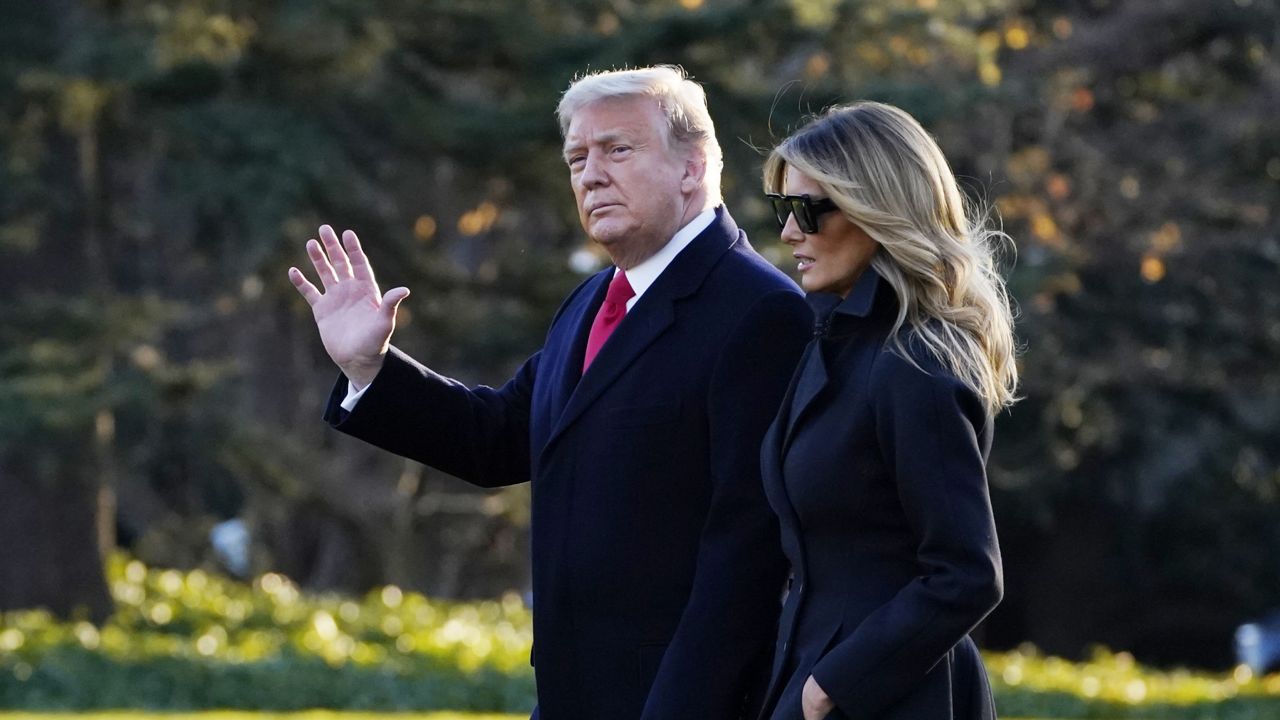As 2020 draws to a close, the final week of the year may be a decisive one for the American people, as Congress will take up a series of measures intended to fund the government, the military, and provide COVID aid to working families.
The penultimate week of the year was no less chaotic. Lawmakers on Monday night finally agreed to an omnibus coronavirus relief and stimulus package, which came after months of fighting between parties.
On Tuesday, President Donald Trump released a video that sent shockwaves through Washington when he slammed the package his own administration helped create, saying the $600 direct payment to most Americans included in Monday’s package wasn’t nearly enough. Instead, Trump encouraged Congress to increase the checks to $2,000 — but didn’t say outright that he would veto the bill as-is.
A separate funding bill is also in jeopardy after Trump refused to sign the National Defense Authorization Act Wednesday evening, legislation that affirms 3% pay raises for U.S. troops and authorizes more than $740 billion in military programs and construction.
Here’s a breakdown of back-and-forth between the House, the Senate, and the White House week, and what lawmakers plan to do in the coming days to avert a government shutdown:
Monday, Dec. 21
Just before midnight on Monday, Congress overwhelmingly voted to pass a massive package to both fund the government through next year and provide billions of dollars in much-needed economic relief related to the coronavirus pandemic.
After months of fighting, the measure passed in the Senate by a margin of 92-6, following a vote in the House of 359-53.
The bill includes appropriations to fund government agencies and functions through the end of fiscal year 2021 — a $1.4 trillion measure — along with a $900 billion relief package, which renews unemployment relief, small business aid and delivers direct $600 payments to Americans. It also includes funding for rental assistance, education, vaccine distribution and other hurting industries.
The House and Senate adjourned until a pro-forma session on Thursday.
Tuesday, Dec. 22
Prospects of a new stimulus bill dimmed Tuesday evening with President Trump’s surprise video announcement.
Trump took particular issue with the low amount of money allocated as direct payments to Americans.
“I am asking Congress to amend this bill and increase the ridiculously low $600 to $2,000 or $4,000 for a couple,” Trump said. “I am also asking Congress to immediately get rid of the wasteful and unnecessary items from this legislation, and to send me a suitable bill or else the next administration will have to deliver a COVID relief package.”
Trump did not expressly threaten to veto the legislation in the video unless payments to Americans were upped from $600 to $2,000, but seemed to suggest that he would not sign. It was this portion of the bill, among several others, that caused lawmakers to stall for months on an agreement.
Wednesday, Dec. 23
Trump on Wednesday followed through with his promise to veto the National Defense Authorization Act, returning it to the House of Representatives without his approval.
The NDAA is a separate funding bill from the omnibus spending and stimulus package, and has passed Congress with bipartisan support for nearly 60 years.
The president had long threatened to veto the act for numerous reasons, chief among them being it did not contain language repealing Section 230, a key component of the Communications Decency Act that shields websites from liability for content posted by the platform’s users.
Thursday, Dec. 24
The House convened for a rare pro-forma session on Christmas Eve, with Democrats hoping to bypass procedural rules and increase direct payments to Americans in the stimulus package.
House Republicans swiftly rejected the call for unanimous consent, and Congress was forced to send the omnibus spending bill to President Trump as-is.
Pelosi will hold a recorded vote Monday on a stand-alone bill to increase economic impact payments to Americans, per Trump’s video request.
Friday, Dec. 25
There is no formal or informal session of Congress on Christmas Day, and President Trump is spending the holidays with family at his Mar-a-Lago resort. President Trump has 10 days to review the measure — since Congress is adjourned, without his signature, the bill will not become law on Jan. 3.
Without President Trump’s signature by Jan. 3, when a new Congress is sworn in, the omnibus bill will be considered effectively defunct, and lawmakers will be forced to start over.
According to multiple reports, citing aides, the bill will be flown to Trump at his Mar-a-Lago resort in Florida, where he is spending the holiday.
Monday, Dec. 28
Democrats will recall House lawmakers to Washington for a vote Monday on Trump’s proposal, with a roll call that would put all members on record as supporting or rejecting the $2,000 checks.
They are also considering a Monday vote on a stop-gap measure to at least avert a federal shutdown. It would keep the government running until Biden is inaugurated Jan. 20.
Lawmakers are also holding a vote to override Trump’s veto of the NDAA; a two-thirds vote in the House will be needed for the override.
The Senate will convene for a pro forma session but will not formally consider measures until Tuesday.
Tuesday, Dec. 29
Should the standalone bill including $2,000 direct payments pass the House, it will likely face tougher scrutiny in the Senate on Tuesday.
The Senate will also consider a possible veto override on the NDAA, where two-thirds vote in both chambers are needed to nullify the president’s veto.
Sunday, Jan. 3
January 3 is the end-all date for the stimulus relief package: if President Trump fails to act either way before Jan. 3, his inaction counts as a "pocket veto," and the bill does not become law. Congress could override his veto, but the closer to 2021 it gets the harder this will be — a new Congress in sworn in Sunday, Jan. 3.
The Associated Press contributed to this report.



